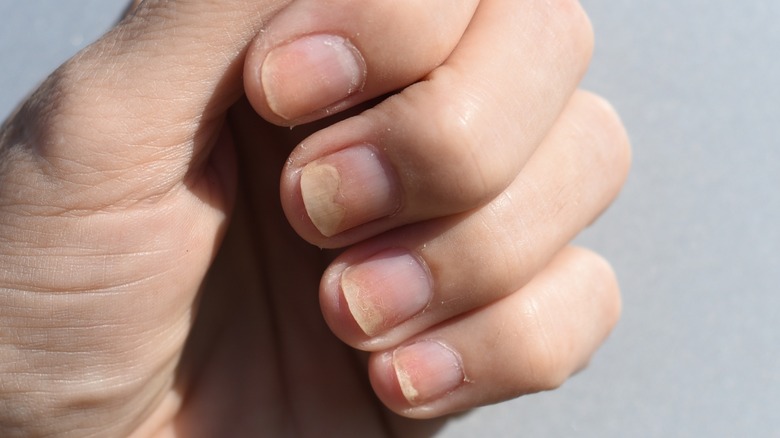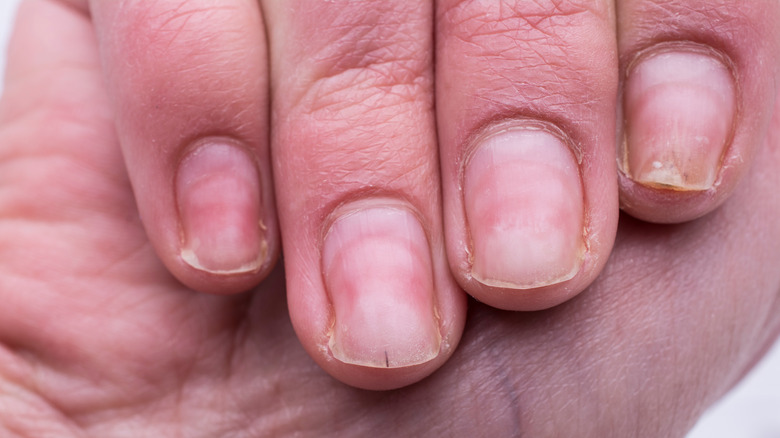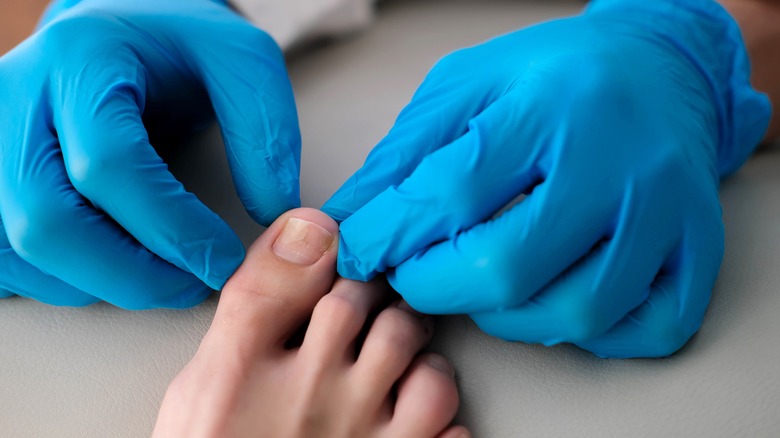What It Really Means When Your Nails Are 'Lifting' (And How To Prevent It)
If you let your nails breathe from polish or manicures for a bit, you may start to notice that your nails don't look, well, too great. A lot of things can happen to our nails, and while most of them are nothing, some can be a sign of a health issue in our bodies. Wearing nail polish too long can cause some white spots on your nails, while using too much nail polish remover can make your nails brittle. Some polishes, as well as issues like diabetes, can leave our nails looking yellow, and an iron deficiency can cause our nails to thin out and curve.
A common problem people often notice is that their nail seems to "lift" or separate from the skin. According to Cleveland Clinic, this is referred to as onycholysis. But before you go running to your doctor thinking you have a serious problem, it's important to understand exactly what this nail lifting is and what it means for your health and the health of your nails.
What is Onycholysis?
It may sound scary, but onycholysis is quite common. In fact, pretty much everyone, regardless of health, can suffer from their nails lifting, although adult females are more susceptible to it. There are a few reasons your nails may begin to lift. It can happen after getting a fungus in your nail, which usually has other symptoms like white spots. Other reasons onycholysis occurs are due to a reaction to a chemical found in nail polish or acrylic nails. Certain polish removers and nail glosses can also cause this.
If you take certain medications like oral retinoids or NSAIDs, or if you had a recent injury to the nail bed, you may also notice signs of onycholysis. The nail lifting often only affects one nail, but if you see it happening to all of your nails, it could be a sign of hyperthyroidism or an iron deficiency, so be sure to speak with your doctor right away. While onycholysis is usually not something to worry much about, it can be a nuisance, mainly because there is no surefire way to get rid of it until a new nail grows in its place.
How to handle and prevent Onycholysis
Before you start treating your onycholysis or rushing to the doctor, first understand what exactly caused the issue to begin in the first place. If the cause is an injury to the nail bed, the only thing you can do is be patient and let the broken nail grow out on its own, cutting it when needed. A new, healthy nail will eventually grow back in its place. If the cause is fungal, there is a bit more work involved. You first want to ensure the fungus doesn't spread anywhere else, so be sure to clean your nails and avoid putting them in your mouth, per Healthline. Your doctor can also prescribe oral and topical antifungal medications to help.
If you want to prevent onycholysis, you may want to avoid the nail salon and do your nails at home using products that do not irritate your skin. If you love getting them done, try to keep them healthy in between manicure visits. You should also try to keep your nails short, wear gloves when washing the dishes, avoid biting your nails, and wear clean socks to ensure it doesn't occur on your toenails as well.


